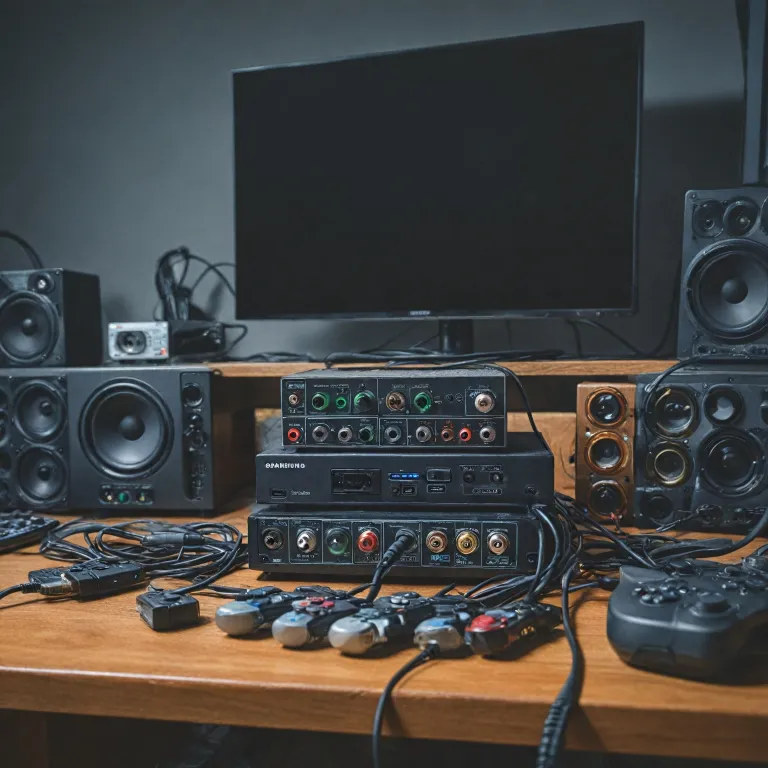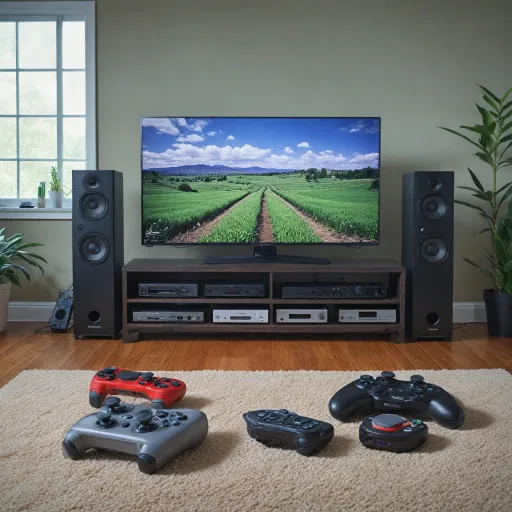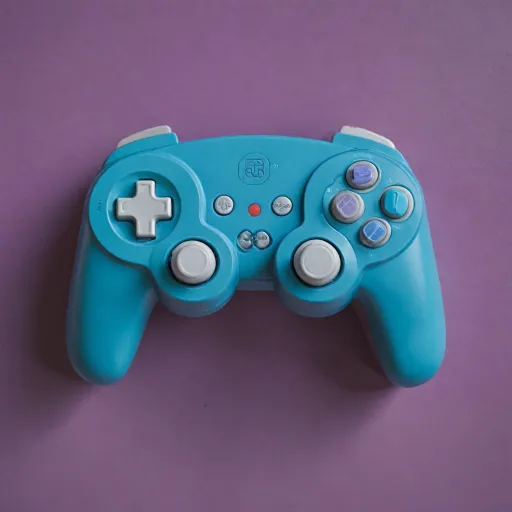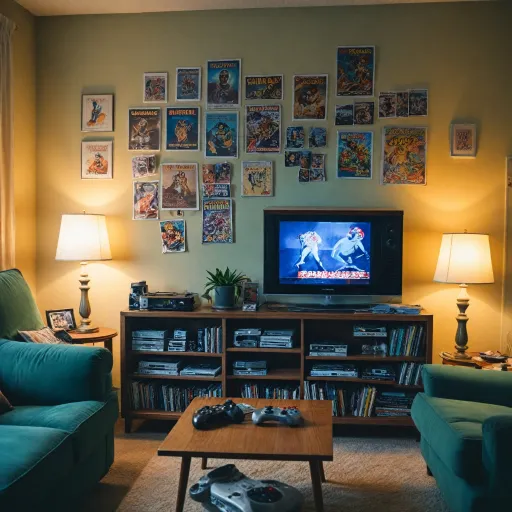
What is a Component Video Switcher?
Decoding the Component Video Switcher
A component video switcher is a valuable device in the landscape of gaming consoles. It's designed to simplify the connection of various devices to a single display, moving beyond the limitations of a single input. Far from being just another audio-video accessory, the component video switcher is crucial for those seeking to enhance their gaming setup.- Purpose and Functionality: At its core, the component video switcher allows multiple gaming devices, such as older consoles featuring RCA or composite outputs, to connect to one TV, ensuring seamless transition between inputs. This is particularly beneficial for gamers who rely on consoles with different ports, like component or composite RCA, without needing to unplug and replug cables.
- Connection Versatility: It supports both video and stereo audio, enabling inputs from systems rgb or composite sources. Through automatic switching or manual options, you can enjoy high definition or rgb component connections without a hitch.
- Enhancing Video Quality: For gamers appreciating vintage systems, the switcher maintains optimal video quality. By integrating rgb components and bypassing issues commonly found with composite video, it enhances visual fidelity.
- Adaptability: The switcher models vary to fit different systems and user needs, from simple three-input boxes to more complex matrix switch configurations.
Why Use a Component Video Switcher with Gaming Consoles?
Benefits of Integrating a Component Video Switcher with Your Gaming Console
Connecting a component video switcher to your gaming console can enhance your overall gaming experience by streamlining your audio and video management. With the proliferation of various gaming systems, each requiring its own set of inputs, a component video switcher simplifies the process considerably.- Improved Video and Audio Quality: Component video switchers allow for high-definition video transfers, maintaining the integrity of your HDMI, RGB, or component video signals. By reducing signal degradation, you can enjoy crisp and immersive visuals.
- Efficient Input Management: These switchers offer multiple input options, letting you connect various devices such as the latest video cards or legacy systems like the Wii component with ease. They prevent the constant swapping of cables and ensure uninterrupted gameplay.
- Audio-Visual Flexibility: Switchers often support stereo audio output alongside video, making the transition smoother when switching between games or consoles. This functionality can be particularly beneficial for those using composite RCA connections or requiring a matrix switch approach for more complex setups.
- Space Saver: By minimizing cable clutter and providing a central hub for your devices, component video switchers help to maintain a cleaner entertainment area without compromising video quality or audio fidelity. Their compact designs often serve as a mini hub, freeing up space that would otherwise be consumed by multiple separate switches.
How to Choose the Right Component Video Switcher
Choosing the Ideal Component Video Switcher for Your Gaming Needs
Selecting the right component video switcher for your gaming setup can greatly enhance your video and audio experience. As with any piece of equipment, there are several factors to consider to ensure you’re making the best choice for your specific requirements.- Number of Inputs and Outputs: The first aspect to consider is how many devices you want to connect. A switcher with multiple input components like HDMI, RCA, or composite RCA inputs will be more versatile. For instance, systems supporting multiple consoles such as Wii component connections may benefit from a matrix switch capable of handling multiple input sources.
- Video Quality Support: Ensure that the switch can support the video quality level you desire. If you’re aiming for high-definition gaming, opting for a switch that supports RGB components or even automatic component switches could be beneficial. There are switches that specifically handle RGB to component conversions, which can significantly enhance game graphics.
- Audio Considerations: Don't skip the audio aspect. Many video switches also manage audio. Look for options that support stereo audio or more advanced audio video outputs to complement your gaming experience.
- Ease of Use and Remote Control: Consider how user-friendly the switch is. Some models come with remote controls for easy switching between inputs. Look for automatic input switchers if you prefer a more hands-free experience.
- Durability and Brand Reliability: Brands with positive reputations in video card technology, such as Extron, often produce robust and reliable switches. Reading reviews and perhaps opt for a switch tested by other gamers can provide peace of mind.
Setting Up Your Component Video Switcher
Steps to Configure Your Setup
Setting up a component video switcher for your gaming console can significantly enhance your gaming experience by improving video quality and managing multiple inputs. Whether you are using an Extron model or another brand, the process is similar. Let’s walk through the necessary steps.
1. Gather Your Equipment
Before you begin, ensure you have all the required components:
- Component video switcher
- Component cables (RGB, composite RCA)
- Audio cables (stereo audio or audio video cables)
- Your gaming consoles (such as Wii or others with component output)
- Display device or TV
2. Connect Your Consoles to the Switcher
First, connect the component video cables from your gaming consoles to the input ports on the switcher. Make sure each console's output, whether component RGB or composite, matches the input specifications of your switcher.
3. Cable Management
Use organized cable management techniques to avoid tangling and ensure smooth setup. Labeling each cable can help you quickly identify what goes where, especially when handling multiple switches.
4. Link the Switcher to Your Display
Next, connect the output from the switcher to your TV or display device. Use the best available connection for video, such as HDMI, to achieve high definition quality. In some cases, connecting through RGB component or composite RCA will be necessary, depending on the compatibility of your TV.
5. Ensure Audio Connection
Link the stereo or component audio cables from your switcher to your audio system. This step often involves connecting audio video cables to ensure that sound is distributed effectively without loss of quality.
6. Power On and Configure
Power on the component video switcher. If your switcher supports automatic component detection, it will switch between inputs automatically based on which console powers on. If not, use the manual switches to select the desired gaming console for output.
7. Test Your Setup
Conduct an input switch test by toggling through each connected console to see if the video and audio outputs work correctly. Check for video card compatibility and video quality to ensure optimal performance. Adjust settings if needed.
Final Checks
After completing the setup, perform a final check to confirm that every system’s RGB, component switcher, and audio video outputs are functioning properly. This routine will help you spot any potential issues before starting your gameplay.
Troubleshooting Common Issues
Resolving Common Component Video Switcher Problems
While using a component video switcher with your gaming console setup can greatly enhance the gaming experience, you might encounter some issues that need troubleshooting. Here are a few common problems and their potential solutions:
- No Video Signal: If you're not receiving a video signal, double-check the connections. Ensure that the component video cables are correctly plugged into the right input and output ports on the switcher and the gaming console. Make sure all cables, including RGB component cables, are not damaged or loosely connected.
- Poor Video Quality: If the video quality seems subpar, verify that the switch tested is compatible with high-definition output. Also, check that the inputs component and connections are clean and free from dust or debris. Sometimes, upgrading to a better quality component video switcher may enhance the image clarity.
- No Audio Output: When there's no audio output, inspect your audio video connections. Check if your stereo audio connections are secure and the audio settings on the gaming system are correctly configured. It's crucial to ensure that the audio is routed through the appropriate input switch on the component switcher.
- Intermittent Signal Loss: If you're experiencing signal loss, it may be due to interference or faulty cables. Ensure that the component composite cables are well shielded and not placed near other electronic devices that could cause interference.
- Incorrect Input Selection: If switching between sources is problematic, confirm the switch component is functioning correctly. Some matrix switches allow for automatic switching — double-check these settings if applicable.
- Delays in Switching: Occasionally, the switching process might be slow. This could be due to a plethora of connected devices. Simplifying the setup by eliminating unused connections might help.
Troubleshooting can sometimes be a process of elimination. By checking and testing each component and connection, you can often identify and remedy the issue. Should problems persist, considering assistance from the manufacturer's support or forums dedicated to gaming console setups could prove invaluable.












